The New Acer ConceptD Family: Workstations and Displays for Professionals
by Anton Shilov on April 12, 2019 12:00 PM EST- Posted in
- Workstation
- Acer
- Intel
- Xeon
- Monitors
- Core 9th Gen
- Quadro RTX
- Mini LED
- ConceptD
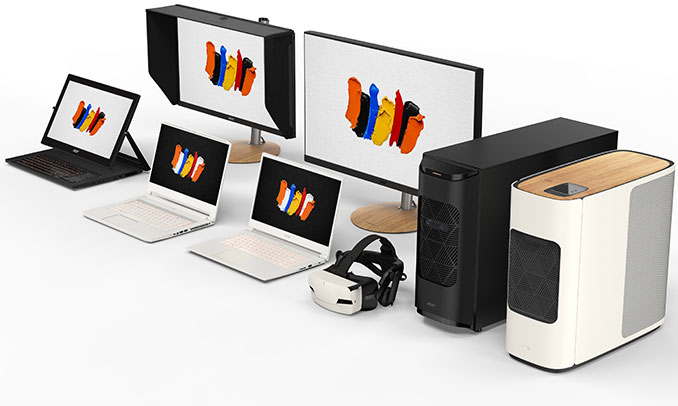
Acer this week introduced its new ConceptD brand that will be used to market computers and other equipment designed primarily for content creators and engineers. The initial family of products includes high-end desktop and mobile workstations, professional displays, and an AR/VR headset.
Performance to the Max
Because of engineering prowess of its Predator division, Acer has become one of the world’s largest supplier of gaming desktops and laptops in the recent years. The company, which certainly knows how to build high-performance PCs, has been eying professional solutions for some time now with its Veriton desktops as well as ProDesigner displays. However, Acer has not significantly directly addressed the market of workstations with all the guns and ammo it has. This week, the company rolled out its ConceptD lineup of products that includes:
- Two desktop workstations,
- Three mobile workstations,
- Two professional monitors,
- and a Windows Mixed Reality headset.
All the new ConceptD products take a lot of pages from the Acer Predator book when it comes to things like cooling, internal architecture, ergonomics, and so on. In the meantime, since these are workstations aimed primarily at architects, animators, graphics designers, engineers, film makers, product designers, visual effects specialists, and so on, stability and reliability are the cornerstones of these PCs.
Note: We are going to cover Acer’s flagship ConceptD offerings in more detail in the coming days.
The Desktops
The portfolio of desktop ConceptD machines includes the ConceptD 500 based on Intel Core i9-9900K with up to 64 GB of DDR4 as well as the Concept D 900 workstation powered by two Intel Xeon Gold 6148 processors with up to 192 GB of DDR4. It is quite surprising to see anyone trying to enter the market of dual-processor workstations, which is lucrative, but rather small these days, but this is exactly what Acer is doing.
Both PCs use NVIDIA’s Quadro RTX 4000 or Quadro RTX 6000 professional graphics cards and offer features and expandability that one comes to expect from workstations aimed at content creators and engineers. The Quadro RTX graphics cards have been certified by leading developers of professional applications, so the new machines are ready to go out-of-box.
The Laptops
The lineup of ConceptD mobile workstations includes three machines. Apart from performance, the key feature of Acer’s mobile workstations is color accuracy of their IPS displays featuring a 3840x2160 resolution. All of the screens are Pantone Validated and factory-calibrated for the Adobe RGB color gamut.
The 15.6-inch ConceptD 5 based on Intel’s Core i7 ‘Kaby Lake-G’ CPU with AMD’s Radeon RX Vega M GL graphics is the thinnest and lightest in the family targeted at those who work on the go. Given the positioning, this PC is outfitted with a Windows Hello-certified fingerprint reader, and a TPM module.
The 15.6-inch ConceptD 7 is powered by Intel’s 9th Gen Core i7 CPU accompanied by NVIDIA’s GeForce RTX 2080 GPU in Max-Q configuration, thus, offering a balance between performance, power consumption, and portability (the laptop weighs 2.1 kilograms).
Acer’s top-of-the-range mobile workstation is the 17.3-inch convertible ConceptD 9 also runs Intel’s 9th Gen Core i9 (something tells me we are dealing with a six-core or an eight-core variant) and NVIDIA’s GeForce RTX 2080, but the latter comes without Max-Q limitations, but at the cost of additional weight and a bulky chassis.
The Displays
The ConceptD monitor family currently includes two displays of today’s most popular sizes: the 27-inch CP7271K and the 32-inch CM7321K. Both LCDs are Pantone Validated and ship factory calibrated with color accuracy of Delta E <1. Besides, both carry VESA’s DisplayHDR 1000 badge, thus offering a peak brightness of 1000 nits and supporting at least one HDR transport.
The smaller 27-inch CP7271K is a 4K display featuring a 144 Hz refresh rate along with NVIDIA’s G-Sync Ultimate technology. Essentially, this is one of the world’s first professional monitor featuring a 144 Hz refresh rate and therefore suitable for creation of appropriate content.
The bigger 32-inch CM7321K is a 4K LCD that uses a Mini LED-based FALD backlighting with 1152 local dimming zones and thus delivering an ultimate contrast ratio. Being aimed primarily at DCC specialists, the monitor covers 89.5% of the Rec.2020 color space.
The Headset
The Acer ConceptD Ojo Windows Mixed Reality is a yet another 4K head mounted display aimed primarily at professionals. The HMD is equipped with two 2.89-inch screens featuring a 2160×2160 resolution per eye (4320×2160 combined resolution), a 90 Hz refresh rate, and an unknown field of view. The AR/VR headset features integrated inside-out 6-degree-of-freedom (6DoF) positional tracking and therefore does not require any external sensors. Besides, it also has its own audio headset, and two front-facing cameras to enable augmented reality applications.
The device will ship with Acer’s motion controllers that the company yet has to describe in detail.
At a Glance
Here is a quick summary of Acer’s ConceptD products announced this week that will ship in the coming months. Note that we are going to cover the flagship offerings in more detail a bit later.
| Acer's ConceptD Products at a Glance | |||||
| Key Features | ETA | Price | |||
| Desktop Workstations | |||||
| ConceptD 500 | up to Intel Core i9-9900K up to 64 GB DDR4-2666 NVIDIA Quadro RTX 4000 |
NA: June EMEA: July |
NA: $1,699 EMEA: €2,799 |
||
| ConceptD 900 | Dual Intel Xeon Gold 6148 (40 cores) up to 192 GB DDR4-2666 NVIDIA Quadro RTX 6000 |
NA: May EMEA: June |
NA: $19,999 EMEA: €17,999 |
||
| Mobile Workstations | |||||
| ConceptD 5 | 15.6-inch 4K IPS Intel Core i5-8305G/Core i7-8705G AMD Radeon RX Vega M GL 8 or 16 GB DDR4 1.5 kilograms |
NA: April EMEA: July |
NA: $1,699 EMEA: €1,699 |
||
| ConceptD 7 | 15.6-inch 4K IPS Intel 9th Gen Core i7 NVIDIA GeForce RTX 2080 w/ Max-Q or NVIDIA GeForce RTX 2060 up to 32 GB DDR4 2.1 kilograms |
NA: April EMEA: July |
NA: $2,299 EMEA: €2,299 |
||
| ConceptD 9 | Convertible 17.3-inch 4K IPS Intel 9th Gen Core i9 NVIDIA GeForce RTX 2080 up to 32 GB DDR4 4.1 kilograms |
NA: April EMEA: July |
NA: $4,999 EMEA: €4,999 |
||
| Professional Displays | |||||
| ConceptD CP7271K | 27-inch 3840×2160 at 144 Hz DisplayHDR 1000 G-Sync Ultimate Adobe RGB 99% |
NA: July EMEA: July |
NA: $1,999 EMEA: €2,099 |
||
| ConceptD CM7321K | 32-inch 3840×2160 at 60 Hz DisplayHDR 1000 Mini LED FALD w/ 1152 zones Adobe RGB 99% Rec.2020 89.5% |
NA: September EMEA:September |
NA: $2,999 EMEA: €3,199 |
||
| Professional Headset | |||||
| ConceptD Ojo | 2 × 2.89-inch 2160×2160 screens 6 DoF inside-out-tracking Accelerometer Gyroscope Magnetometer Proximity Sensor 2 × Cameras Built-in speakers Motion controllers |
NA: ? EMEA: ? |
NA: $ EMEA: € |
||
| Note: | Exact features, configurations, and prices will vary from market to market | ||||
More to Come
With five workstations, two professional displays, and a headset announced this week, it is clear that Acer is serious about (re-)entering this market. The company stated at the presentation that more ConceptID products are to come in the future. Considering the fact that Acer dared to enter a very niche market of dual-processor workstations dominated by Dell, HP, and Lenovo, it is highly likely that the company will try to address other niche markets as well.
Related Reading
- Acer Wants To Sell a Dual Xeon Predator X System: Please No
- Acer Unveils ProDesigner BM270 LCD with Delta E<1 Color Accuracy: 4K, HDR, FALD
- Acer Reveals Predator Orion 9000 Gaming Desktop: Up To 18 Cores, 4 Vega GPUs
- Acer Announces Predator Orion 3000/5000 Series Gaming Desktops
- Acer Predator 21 X Laptop with Curved Display Now Available, Only 300 to Be Made
- Acer Shows Off Triton 900: 17-Inch Convertible Gaming Laptop
Source: Acer


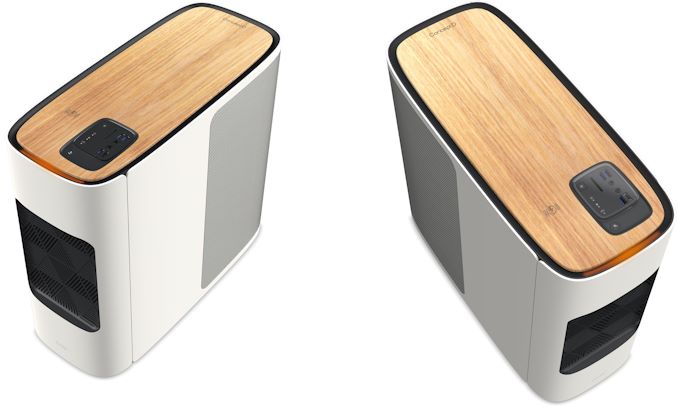

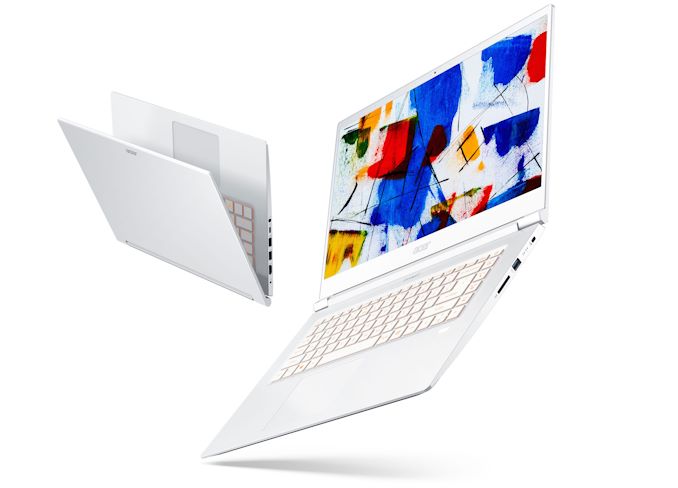
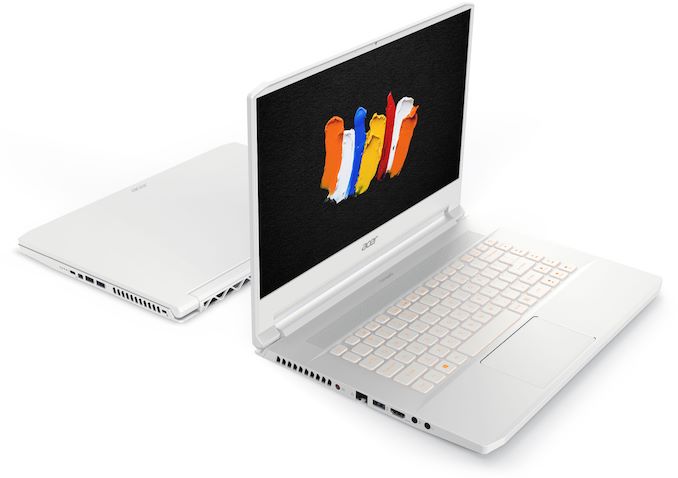
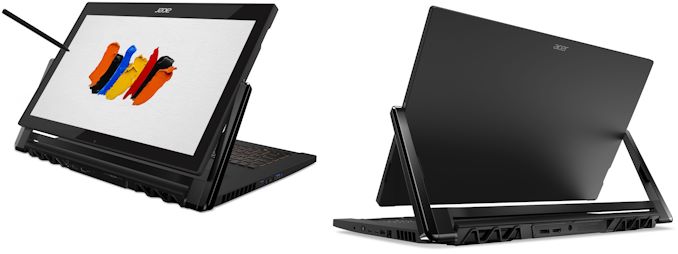
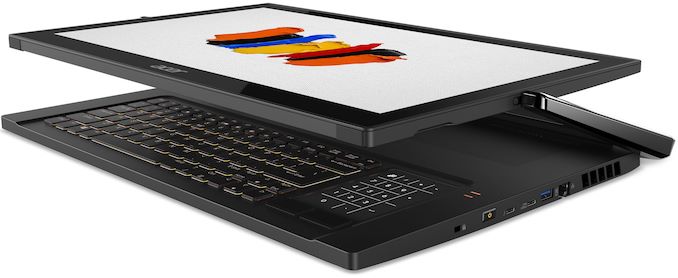
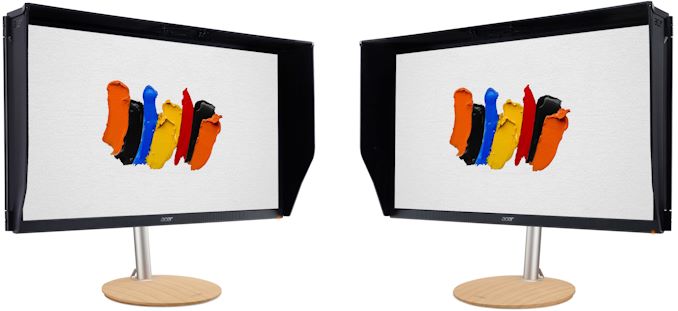
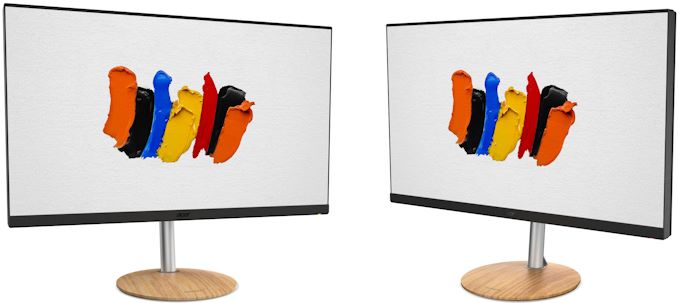
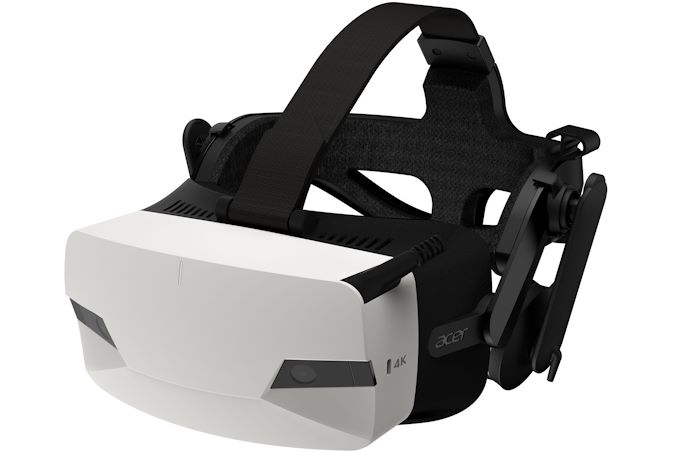









20 Comments
View All Comments
bubblyboo - Friday, April 12, 2019 - link
Still the $2K price point for the 144Hz 4K displays after a year. +$1000 for miniled (not microled) but only 60Hz and no adaptive sync. Yikes.cheinonen - Friday, April 12, 2019 - link
The $3,000 monitor has 1152 dimming zones (absurdly high when the highest-end TV right now is ~480) and does almost 90% of the Rec.2020 gamut (a TV with close to 100% DCI/P3 gamut coverage is short of 80% of Rec.2020) so it looks to be a truly high-end video editing display but without getting into the price realm of Flanders Scientific and other reference displays that cost far, far more.nathanddrews - Monday, April 15, 2019 - link
For sure - that many zones is pretty much required when sitting so close to a display and using it for varied content (text, photos, etc.). 6+ feet away, you can get away with fewer zones for fullscreen video and gaming content, but it's not so great for desktop use. The bloom of local dimming zones is really noticeable if (when) it follows the cursor around, especially if you use a dark theme/background. I would even go as far to argue that 1152 is not enough for regular desktop use and for the price I would be tempted to go OLED, despite the IR/BI issues.That said, I'm sure it'll be a great display in its own right. The Predators are excellent displays, so Acer knows how to get the job done.
Valantar - Saturday, April 13, 2019 - link
MicroLED is still quite a few years from consumer availability in TVs, let alone high-DPI monitors - and when it arrives, it'll be far more expensive than this at first.As for everything else: as cheinonen mentions below, the color accuracy, gamut, and general featureset of both these monitors target them squarely at professional markets (including the G-Sync one, just for game development), where prices like these are perfectly reasonable.
bubblyboo - Saturday, April 13, 2019 - link
Professionals for what? FALD is the antithesis of professional monitoring. You're looking at roughly a 90x90 pixel grid for each dimming zone which will wreck havoc for monitor accuracy. Anything with FALD is not targeting the professional market.cheinonen - Sunday, April 14, 2019 - link
FALD is something you can (almost certainly here) disable in the menus but allows you to have access to it for looking at HDR if that's what you're working on. The relatively meager specs available don't really say what other features it has that professionals would need (LUTs, custom colorspace support, calibration reminders, etc...), but mostly the lack of 144Hz or adaptive sync here is meaningless since that's not the market.bubblyboo - Sunday, April 14, 2019 - link
Turn off FALD and all you're left with is the same 4K 32" IPS panel with quantum dots, i.e. nothing worth $3K. And the only reason these aren't targeting "that market" is because AU Optronics failed their original plan of producing such panels. Straight from their 8/28/2018 press release:Mini LED Backlit Gaming Monitor Displays Reviving Game Scenes with Ultimate Image Quality
Also targeting at high-end gaming and niche application markets, AUO will exhibit 27 and 32-inch 144Hz gaming monitor displays adopting direct-lit mini LED backlight. Equipped with UHD 4K high resolution and quantum dot wide color gamut, and exceptional local dimming effect combined with 1,000 nits ultra high brightness, the displays boast HDR images to meet the highest VESA DisplayHDR performance level, perfectly capturing both bright and dark image details in games. Furthermore, its bezel-less design provides gamers with lifelike and immersive gaming experience.
Zoolook13 - Monday, April 15, 2019 - link
If it's possible to turn off you would be looking at a black screen, so that seems pretty pointless, unless you suggest they ship them with two different backlights?Flunk - Sunday, April 14, 2019 - link
Why pay for the world's most overhyped, overpriced feature if you're not going to use it?stephenbrooks - Friday, April 12, 2019 - link
ConceptD 500 looks like a nice design and a competitive price. Rest of them look a bit steep. The 4K HMD looks very cool too, shame no price yet.